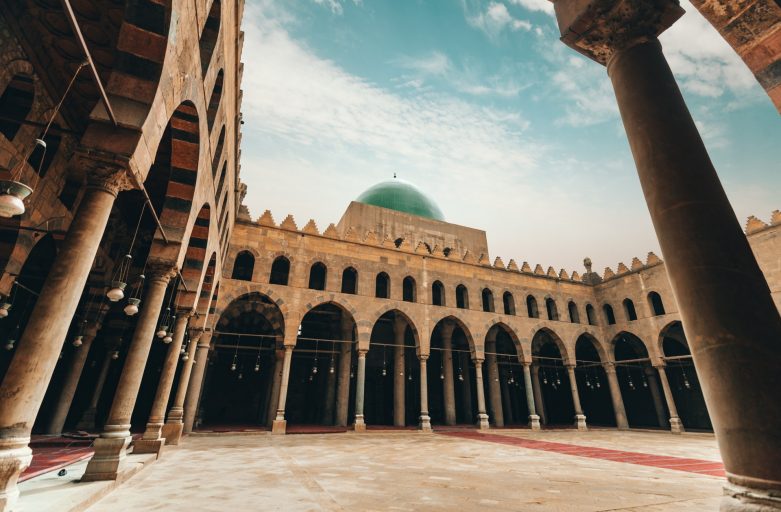Islamic Cairo ” was added to the Unesco’s World Heritage List in 1979. “Islamic Cairo ” is more or less the medieval part of Cairo that differs remarkably from the modern districts. Founded in 648 CE by Amr ibn al-Ass, the military base was called Fustat. In the middle ages Fustat not only expanded but also developed into a major trading center. Here the greatest and the most famous Islamic monuments are found. The area is well worth a couple of days of exploration. It includes the Azhar Mosque and University, Mohamed Ali Citadel and Mosque, the Khan el Khalili Market – but there is much more to see.
Fatimid Cairo, the northern fortified extension of Fustat was later named Al Qahira. The quarter is loaded with history and when strolling into historic Cairo starting from Bab al Futouh (Gate of Conquest), one is transferred back in time. Medieval Cairo and its narrow streets, covered markets and crumbling old buildings evoke the past like nowhere else in Cairo .
People, who are living here amidst historical artifacts, are in general working class people who often live below poverty line and endure poor living standards. Craftsmen, who have inherited their skills from their forefathers and are passing them on to their sons manufacture jewelry, metal, textiles in the many workshops. Women in traditional black outfits, a sight that has almost vanished from the streets in modern Cairo, return from the vegetable market balancing their purchases on the top of their heads gracefully. On donkey carts bits and pieces are transported from one place to the other. Trendy youth in western outfit in cars and pick-ups blend well into the general impression of a street picture from past centuries and just attest the rich diversity of this city.
The Bab al Futouh gate was built in 1087 C.E. by the Armenian General Badr al-Gamali replacing an earlier gate. The huge stretch of Mu’ez al-Din Allah Street, the very heart of the old city, leads from Bab Futouh towards Bab Zuweila. 30 monuments almost neatly lined up next to each other invite for visits. Among them the Al-Hakim mosque, which Badr al-Gamali included within the boundaries of the enclosed city when rebuilding the Northern Wall. The mosque has a prayer corner (qibla) for Sunni as well as Shia Muslims. There are mosques, madrassa, and residential homes like the beautifully restored Bayt al Suhaymi as the prototype for the wealthy, who lived in the district in the 17 th century.
Down the road lies Sultan Qalawun ‘s maristan (“hospital”) built in 1284 to which is connected a mosque, a madrassa (“school”), and the sultan’s own tomb. The complex incorporated special wards for segregating diseases, such as fevers, ophthalmia, and dysentery, baths but also an orphanage, a children’s religious school, and a kindergarten.
The street name Bayn al Qassryn in the Gamaliya district down the Muez al Din Rd reminds of two long ago demolished Fatimid palaces, in the north the palace al-Muiz at the north end, and the palace of al-Aziz in the southwest. It is here that Naguib Mahfouz spent his childhood among the copper and silver smiths and the merchants so vividly described in his triology. A turn to the left leads to the Khurunfish district. Almost unnoticed there lies a nun convent in Haret Zuweila, adjacent to the 4 th century old church Virgin Mary , which was the see of the Coptic patriarchs between the 14 th and 17 th century.
A few meters further, the street sign Haret al Yehud (Alley of the Jews) reminds of the flourishing Jewish community that existed in Cairo for many centuries.
To be continued

